This article was medically reviewed by Luba Lee, FNP-BC, MS and by wikiHow staff writer, Amy Bobinger. Luba Lee, FNP-BC is a Board-Certified Family Nurse Practitioner (FNP) and educator in Tennessee with over a decade of clinical experience. Luba has certifications in Pediatric Advanced Life Support (PALS), Emergency Medicine, Advanced Cardiac Life Support (ACLS), Team Building, and Critical Care Nursing. She received her Master of Science in Nursing (MSN) from the University of Tennessee in 2006.
There are 11 references cited in this article, which can be found at the bottom of the page.
This article has been viewed 11,772 times.
Whether you're near your due date or you're concerned about going into early labor, it’s easy to become hyper-aware of all of the things happening with your body as you look for signs that your baby will arrive soon. While there are some clues you can look for, it's important to remember that every woman's pregnancy and birth experience are unique. If you're unsure whether you're in labor, or if you're concerned something might be wrong, contact your health care provider or local hospital right away.
Steps
Physical Symptoms
-
1Feel for a sensation that your baby has dropped. Anywhere from a few weeks to a few hours before you go into labor, your baby will likely drop lower in your body as it begins to move toward the birth canal. You may notice that your baby bump seems lower than it did before, and you may feel more heaviness in your lower abdomen.[1]
- Because your baby is no longer pushing as much on your lungs, you may also notice that you can breathe more easily.
- After your baby drops, increased pressure on your pelvis and bladder may cause you to urinate more frequently.[2]
Tip: Around this time, you may also notice that your walk resembles a waddle. This occurs as your ligaments and tendons relax in preparation for labor.
-
2Notice if you have loose or frequent bowel movements. You may be used to inconsistent bathroom habits during your pregnancy, but if you suddenly notice that you’re having to run to the bathroom to evacuate your bowels more often than usual, your body might be preparing to go into labor.
You may also experience indigestion or vomiting. Although these are common pregnancy symptoms, they have typically eased by the third trimester, and their return might be a sign that labor is close.[3]- This may occur because your body is trying to make more room for the baby to be born.
Advertisement -
3Pay attention to feelings of restlessness or fatigue. Many women experience a change in their energy level shortly before birth. You could feel more tired than usual, or you may feel like it’s difficult to relax.
You might even feel the urge to get your baby’s clothing and room ready for their big arrival. This is called the nesting instinct, and while it’s already at its strongest in the third trimester, an increased desire to get everything ready might indicate you’re in the last days or even hours of your pregnancy.[4]
If you do feel restless or the nesting instinct hits you, take care not to overdo it. When you're pregnant you can become tired easily, and it's best to be well-rested before labor begins. -
4Talk to your doctor about your cervical effacement and dilation. Late in your pregnancy, you'll have frequent visits with your doctor—possibly as often as once a week as your due date approaches. Typically, in these later appointments, your doctor will do a pelvic exam, and they'll be able to tell you whether your cervix is displaying any of the signs that labor is near.[5]
- Effacement is when your cervix softens, shortens, and thins out. It’s measured in percentages, and your cervix must be 100% effaced before you can have a vaginal delivery.[6]
- Your cervix also dilates, or opens, as your body prepares for delivery. It’s measured on a scale from 0 cm to 10 cm, where 0 means your cervix isn’t dilated at all, and 10 cm means you’re fully dilated and ready to deliver.[7]
Early Signs
-
1Watch for contractions that feel like dull back or pelvic pain. While you might have experienced back pain throughout your pregnancy, if you notice a dull ache, pressure, or cramping in your back, rectal area, or pelvis, you might be having mild contractions.
This is often a sign that labor will start soon, although some women experience contractions for several days or even weeks before active labor begins.[8]
This feeling might be similar to period pains or the discomfort you feel when you need to pass a bowel movement.
If the pains become severe or occur at regular intervals, you may be in active labor, so call your healthcare provider. -
2Time any contractions to determine if they’re Braxton-Hicks. Braxton-Hicks contractions are very common, and it’s easy to mistake them for the real thing. However, Braxton-Hicks contractions will be spaced irregularly, and they will not get closer together over time, while real contractions increase in frequency.[9]
- Also, Braxton-Hicks contractions may vary in intensity, but they will not get consistently stronger the way real contractions will. They also tend to be concentrated in the lower abdomen, while real contractions are often felt in the lower back as well.
- Braxton-Hicks contractions often happen at the end of the day or when you’re physically active.
-
3Look for a spotting of blood that may be your mucus plug. The mucus plug keeps bacteria out of your uterus while your baby grows. As your cervix thins prior to you giving birth, the mucus plug naturally dislodges. If this happens, you'll notice clear, pink, or reddish discharge that may look stringy. Watch for this discharge to appear shortly before you go into labor.[10]
- If you notice unexplained spotting, always go to your doctor to get checked out.
-
4Go to the hospital right away if your water breaks. If you feel a big gush of fluid between your legs, there’s a good chance that your water just broke. However, some women experience this as a steady or irregular trickle of fluid, instead.
Either way, if you suspect that your water has broken, it’s important to go to the hospital or contact your healthcare provider right away.[11]
The longer it takes to deliver your baby after your water breaks, the greater the chance of infection for both you and your child.- Some women will not experience their water breaking at all before they start having contractions. If you're having regular contractions or other signs of labor, do not wait for your water to break before you call your doctor.[12]
Warning: You need to deliver your baby within 24 hours of your water breaking because your baby no longer has amniotic fluid to protect it. Go to the hospital to make sure you have a safe delivery.
Contractions and Labor
-
1Watch for a strong pain in your back and lower belly. Sometimes when labor is near, you might experience a strong, persistent pain in your back or your lower abdomen. This may be due to pressure from your baby moving down into your birth canal.
The pain may not come and go the way that contractions do, but it can still be a sign of active labor.[13]
Typically, this pain doesn't go away when you move, and it may feel like very strong period pains.[14]- While most women experience these pains to some degree, about 1/4 of women have severe pain in their backs during delivery, which is called back labor.
Did You Know? Back labor can sometimes be caused by the baby’s position in the birth canal, although this isn’t always the case. Walking or squatting may help reposition the baby, and having your birthing partner press into the small of your back can help relieve the discomfort.
-
2Check for increased vaginal discharge. When you’re pregnant, your body produces a mucus plug that blocks bacteria from getting into your uterus. As your cervix starts to dilate in preparation for delivery, that mucus plug will come out.
It may be clear or tinged with blood, which may appear brown or pink. Also, the plug may come out all at once, or it may appear as a stringy discharge.[15]
Your mucus plug may come out several days before labor, or it may occur when labor starts.[16]
Because you already have increased vaginal discharge during pregnancy, you may not notice when your mucus plug comes out.[17]- If you have bleeding that is as heavy as a normal menstrual period, call your doctor right away.
-
3Call your healthcare provider if you have strong contractions every 5-10 minutes. When you go into labor, you’ll likely notice pains in your abdomen, and you may even be able to feel the muscles in your lower belly hardening with each pain.
These are contractions, and they’ll get stronger and more frequent as labor progresses. When they’re so strong that you can’t walk or talk through them, and they’re occurring every 5-10 minutes, it’s time to call your doctor or midwife. They'll tell you whether you need to go into the hospital or wait a little longer.[18]
Contractions typically last about 30-70 seconds, and they may feel like very strong period pains. The pain also may be concentrated in your lower back.[19]
Warnings
- You should also call your health care provider if your water breaks or if you're having strong, regular contractions, as it's likely you're in labor.⧼thumbs_response⧽
- If you are bleeding heavily, your baby isn't moving or is moving less than normal, or you are experiencing dizziness or swelling of the face and hands, call your doctor right away.⧼thumbs_response⧽
References
- ↑ https://www.whattoexpect.com/pregnancy/ask-heidi/when-baby-drops.aspx
- ↑ https://www.whattoexpect.com/pregnancy/week-by-week/week-36.aspx
- ↑ https://medlineplus.gov/ency/patientinstructions/000508.htm
- ↑ https://www.marchofdimes.org/pregnancy/contractions-and-signs-of-labor.aspx
- ↑ https://www.uofmhealth.org/health-library/zx3441
- ↑ https://www.mayoclinic.org/healthy-lifestyle/labor-and-delivery/in-depth/signs-of-labor/art-20046184
- ↑ https://www.mayoclinic.org/healthy-lifestyle/labor-and-delivery/in-depth/signs-of-labor/art-20046184
- ↑ https://www.nhs.uk/conditions/pregnancy-and-baby/labour-signs-what-happens/
- ↑ https://www.ncbi.nlm.nih.gov/books/NBK470546/
- ↑ https://americanpregnancy.org/labor-and-birth/signs-of-labor/
- ↑ https://www.tommys.org/pregnancy-information/giving-birth/what-expect-when-your-waters-break
- ↑ https://www.mayoclinic.org/healthy-lifestyle/labor-and-delivery/in-depth/signs-of-labor/art-20046184
- ↑ https://www.marchofdimes.org/pregnancy/contractions-and-signs-of-labor.aspx
- ↑ https://www.nhs.uk/conditions/pregnancy-and-baby/labour-signs-what-happens/
- ↑ https://www.marchofdimes.org/pregnancy/contractions-and-signs-of-labor.aspx
- ↑ https://www.mayoclinic.org/healthy-lifestyle/labor-and-delivery/in-depth/signs-of-labor/art-20046184
- ↑ https://americanpregnancy.org/labor-and-birth/mucus-plug/
- ↑ https://www.marchofdimes.org/pregnancy/contractions-and-signs-of-labor.aspx
- ↑ https://www.nhs.uk/conditions/pregnancy-and-baby/labour-signs-what-happens/
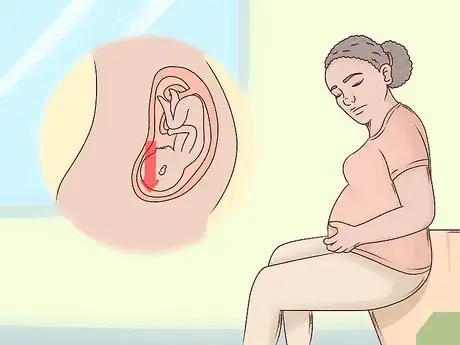
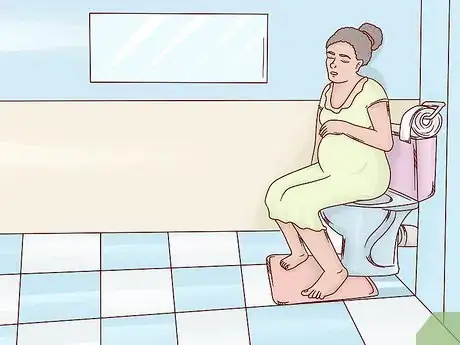

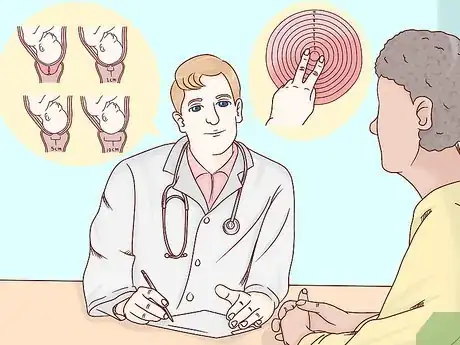

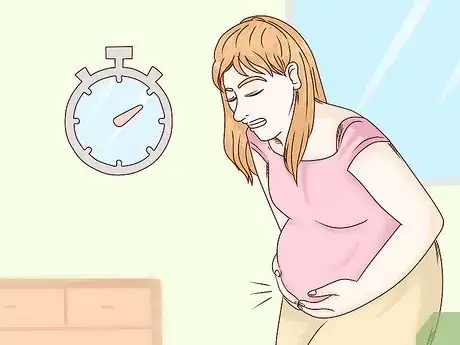

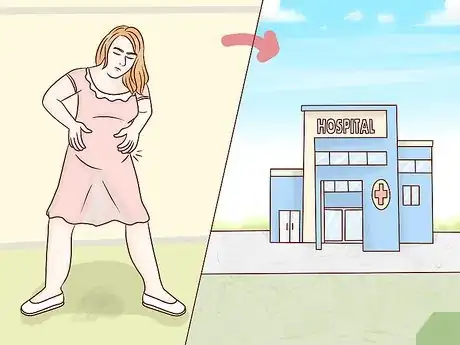
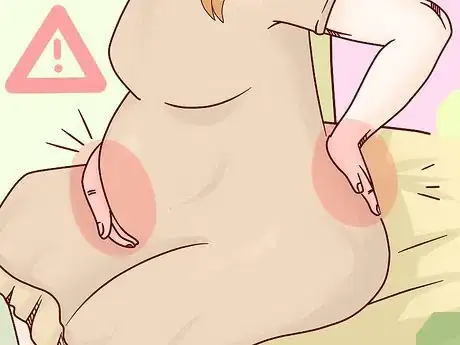

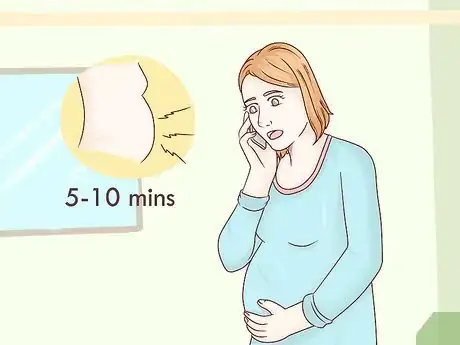



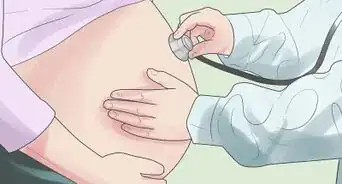



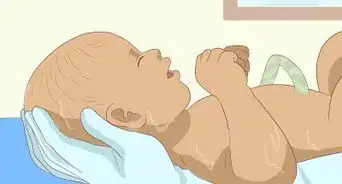













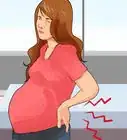


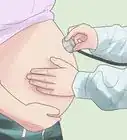



































Medical Disclaimer
The content of this article is not intended to be a substitute for professional medical advice, examination, diagnosis, or treatment. You should always contact your doctor or other qualified healthcare professional before starting, changing, or stopping any kind of health treatment.
Read More...